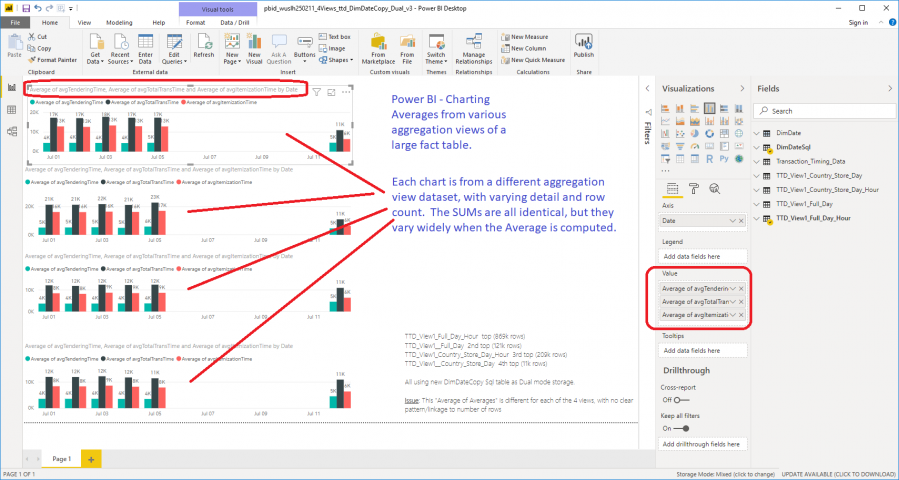Do you have courses that would help with the topic of using Power BI Aggregation for finding the right balance of data load/refresh vs. query performance when using large datasets? One of the new data sources I am working on has hundreds of millions of rows.
Techniques I learned for smaller datasets so not work. It has forced me to experiment with DirectQuery, which gives slow query times, but refresh/load is not an issue. Using Import data mode produces fast queries, but with unacceptably long load and refresh times.
I investigated Incremental Refresh, but my workspace does not support the Premium Service required to use that feature.
Most recently, I discovered the Aggregation feature that supports a mix of Direct Query for detailed data, and Import for summarized/aggregated data. My problem is that I'm struggling with how to produce the aggregated tables from the detailed data.
Thanks,
Larry
Hi Larry,
Great question. I don't specifically cover tricks for working with big data in my course.
You could try Table.Buffer and see if that helps. Just wrap Table.Buffer around your Source function like so:
Table.Buffer(Source = Excel.CurrentWorkbook(){[Name="Table1"]}[Content]),
Mynda
Hi Mynda,
I am having trouble with consistent results for calculating the average values of summary/aggregation tables derived from a large direct query fact table.
I provided detail in the attached Word document (which lets me use Vi editor) and Power BI screen capture.
Any suggestions for a better way to calculate averages that would be more consistent across the various summary views of the fact table?
Thanks,
Larry

Hi Larry,
Can you please start a new thread for the question above as it's a different topic.
Thanks for understanding.
Mynda
